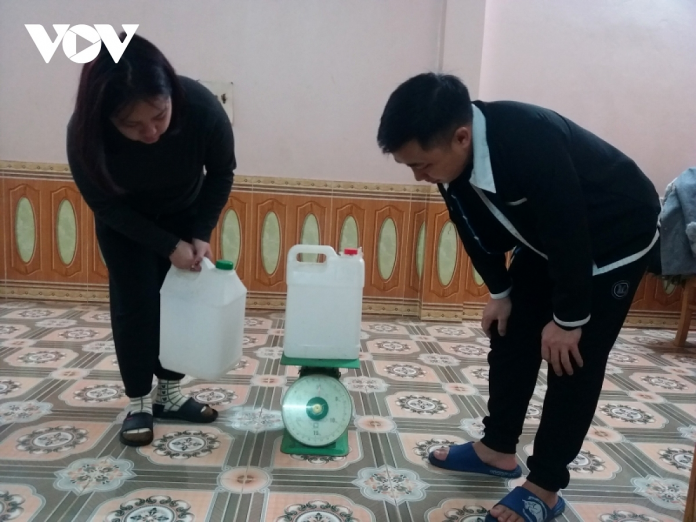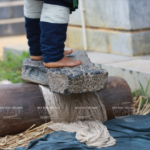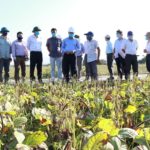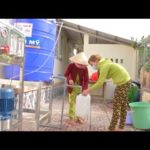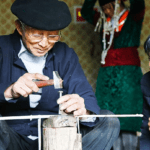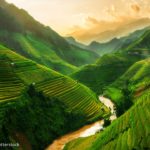The Hmong community, residing in high mountain areas, leads an agrarian lifestyle. Their agricultural endeavors are heavily reliant on weather conditions, particularly water availability. As highland dwellers, the Hmong people encounter water scarcity during the dry season, necessitating long journeys to distant sources for their daily water requirements. Holding a profound belief in the significance of water, they consider it auspicious to fetch water at the commencement of the new year, anticipating that it will bestow luck and suffice their water needs throughout the ensuing year.
While the custom of collecting water at the new year is ubiquitous among the Hmong, the methods employed vary across different regions and groups. In Yen Bai province, for instance, the Hmong people prepare three rectangular pieces of paper, each measuring 5cm by 8-10cm, and three incense sticks as offerings to the river god upstream before procuring water.
Mua Dua Sung, a respected elder from Po Mau village in Co Ma commune, Thuan Chau district, annually reminds his offspring about the importance of fetching water early on New Year’s Day. He elucidates, “The Hmong people bring two cans of water home, one collected on New Year’s Eve and the other on New Year’s Day. These cans are then placed on a scale. If the can filled on New Year’s Day is heavier, it foretells abundant rainfall and prompts the community to initiate new crops following the New Year festivities.”
Another faction within the Hmong community ascribes their fortune in the new year to the comparison of two types of water drawn from the same source but at distinct times. Vu Senh Tu, an elder from Huoi Den village in Co Ma commune, Thuan Chau district, Son La province, elaborates on this belief: “The homeowner places two bowls of water on a scale. Should the bowl collected on New Year’s Day outweigh the other, the elders interpret it as a harbinger of good luck and bountiful harvests for the coming year.”
The tradition of collecting water on New Year’s Day is deeply ingrained in the Hmong culture and is believed to usher in good fortune and favorable weather conditions. Consequently, each Hmong family, after the year-end celebrations, readies a can or a large bamboo tube to gather water on the inaugural day of the new year, imbuing it with hopes for robust health, auspiciousness, and prosperous yields in the months ahead.
The Hmong’s Linen Weaving
Hmong ethnic people dwelling in Dong Van Karst Plateau (Ha Giang Province) are very proud of their traditional crafts of linen weaving and blacksmithing which are famous in Tay Bac (the Northwest of Vietnam). If blacksmithing is well suited to men, weaving is for the females. By making colourful cloth, these women have added vitality to this sterile area of rocky mountains.

